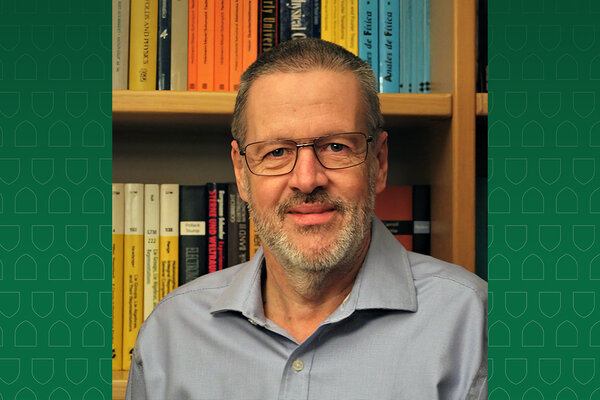
Quantum centre crosses disciplinary boundaries
The Centre for Quantum Topology and its Applications (quanTA) received approval from University Council in May and is now in operation
By Shannon Boklaschuk
A dynamic new research centre in the College of Arts and Science at the University of Saskatchewan (USask) is bringing together faculty members from a number of disciplines to explore the exciting potential of quantum materials.
The Centre for Quantum Topology and its Applications (quanTA) received approval from University Council in May and is now in operation. Researchers from the college’s Departments of Mathematics and Statistics, Physics, and Chemistry are collaborating on work related to quantum materials, which are made possible by the fusion of mathematics and physics.
The materials have remarkable properties, such as electrical conductivities that are controlled purely by the topology—or shape—of their quantum shadow. This is the geometry of the object at the tiny length scales inhabited by electrons and other subatomic particles, said the centre’s founding director, Dr. Steven Rayan (PhD).
“The basic premise here is that microelectronics have changed the face of humanity. There’s very little that’s recognizable between now and 1900,” said Rayan, a professor in USask’s Department of Mathematics and Statistics.
“Today, we all carry around small supercomputers; they’re just our smartphones. Even compared to what we had in 1990, these devices are almost pure science fiction. There are few, if any, buttons. You just swipe your finger and it can do complex and amazing things.”
Watching a film on your telephone at the swipe of a finger was “the stuff of dreams” just 20 or 30 years ago, said Rayan. Now, he said, the question is: “What is the next phase of all of this?”
In March 2019, Rayan was awarded $250,000 by the New Frontiers in Research Fund, a new federal fund designed to promote exploratory research that crosses disciplinary boundaries and enables researchers to take risks and be innovative.
Rayan’s New Frontiers project—“Topology and the Next Generation of Quantum Materials”—is connected to the work he will be doing with quanTA, which is focused on how objects in the visible world cast a “shadow” in the quantum world where electrons and other sub-atomic particles interact.
“We are a kind of unique synergy between mathematics, physics, chemistry, computing and other disciplines,” Rayan said of the centre. “This is convergent science; it’s not about being a math problem or a physics problem. We’re intending to work together on the problem of unlocking what we call quantum materials as the next generation of materials.”
These quantum materials were predicted mathematically as early as 1982, and the discovery in nature of topological materials in 2008 was awarded a Nobel Prize in Physics in 2016, said Rayan. Together, established and junior researchers associated with quanTA will develop models of materials that enjoy these properties under less stringent circumstances and are therefore more readily deployable in groundbreaking applications, such as nanoscale medical devices, spintronic data storage devices and quantum computers, he said.
About 10 USask faculty members in the College of Arts and Science are currently working with quanTA, which will also train graduate students and post-doctoral fellows. The centre’s advisory board includes two Canada Research Chairs in physics at the University of Alberta, a topologist from the University of Manitoba, a University Chair in quantum information from the University of Ottawa, and Dr. Johannes Dyring (PhD), the managing director of Innovation Enterprise at USask.
“We at the new centre are deeply grateful to both the College of Arts and Science and university leadership for supporting our vision and nurturing this project,” said Rayan.
“In particular, I thank the vice-dean RSAW (research, scholarly and artistic work) and his staff for expertly facilitating this proposal and enthusiastically advising at every step of the way, and the university-level centres subcommittee for their wonderful support in this process and for helping us to further refine our vision.”


